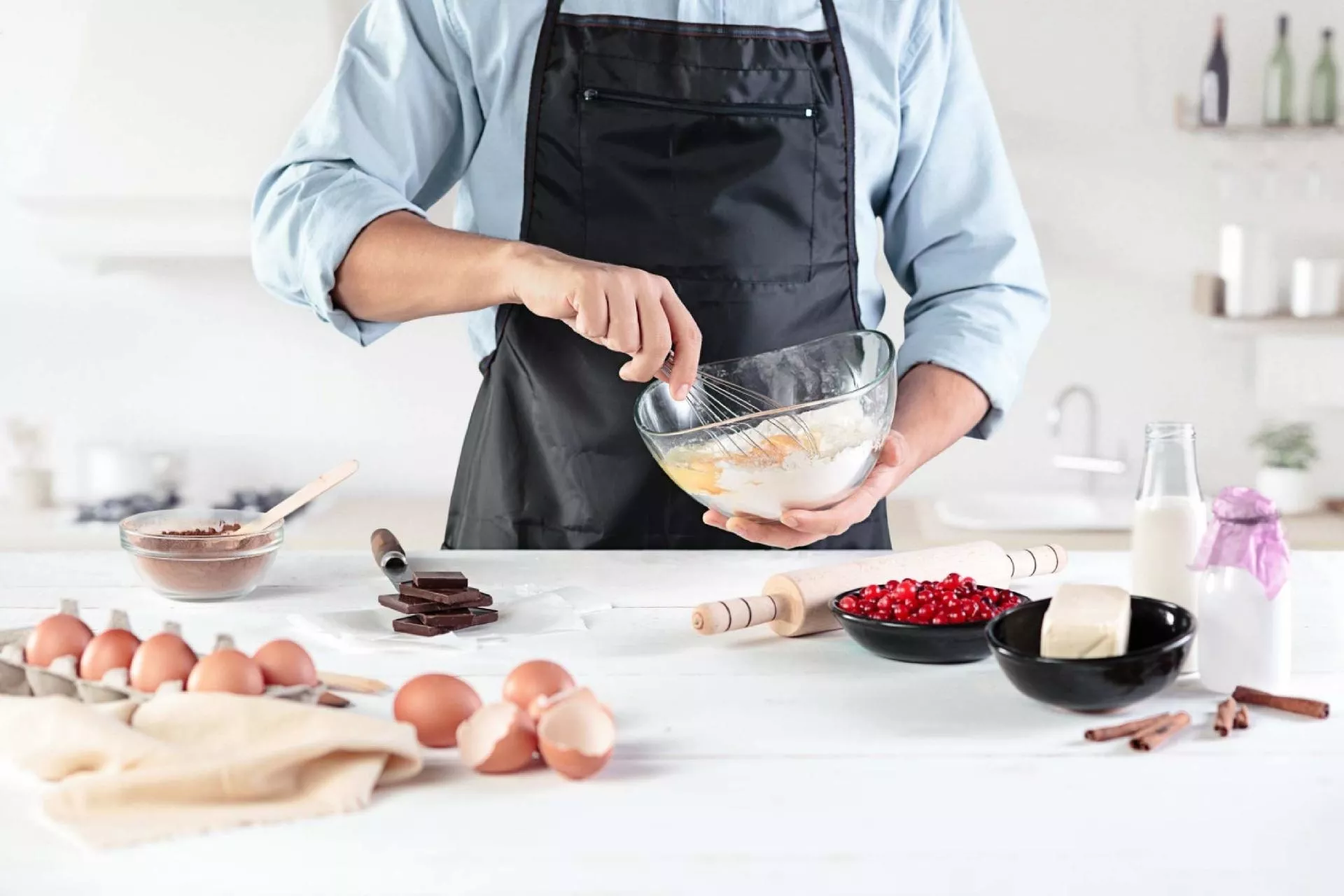Prepare Your Baking Pans
You don’t want the cake to stick to the pan, therefore, you should start by preparing the pans before pouring in the cake mix. With very few exceptions (angel food and chiffon cakes), nearly all recipes require you to grease and flour the pan or line it with waxed or parchment paper. In general it is best to use a shiny pan as this will give the cake a golden appearance. When using a dark or dull-finish pan, reduce the oven temperature by 25F and check it between 3 and 5 minutes earlier than the recipe suggests.
- Bring Ingredients to Room Temperature
You will find that most cake recipes require the ingredients, such as eggs and butter, to be at room temperature. This will ensure that the butter can be mixed easily with other ingredients and the eggs will produce a larger cake volume. However, you shouldn’t use melted butter when the recipe specifies softened butter, and you should never allow eggs to stay at room temperature for too long.
Preheat the Oven
If a cake bakes too quickly then it may develop cracks or tunnels while baking too slowly can result in a coarse texture. Therefore, be sure to preheat your oven to ensure it is at the proper temperature. It is worth investing in an oven thermometer so that you can accurately measure the temperature inside.
Mix the Dry Ingredients
Dry ingredients are things such as flour, salt, and baking powder. Rather than add them individually to the cake mix, it is better to whisk them in a bowl first. This way you can be sure that they will be evenly distributed throughout the mixture.
Combine the Butter and Sugar
If you want your cake to be light and airy, then creaming butter and sugar properly is vital. Start by beating the butter with an electric mixer set to medium to high speed for 30 seconds. Then add the sugar and mix it on a medium speed until it has a light texture and is properly combined. This will take some time, usually 3 to 5 minutes. While mixing, scrape the bowl from time to time. Small bubbles will form during the process, which will give the cake a light texture.
- Add the Eggs One at a Time
Don’t add the eggs all at once. Add them one at a time and beat the mixture well after each one. The protein from the eggs will help support the air bubbles, which will help maintain the cake’s texture.
- Alternate Between Dry and Wet Ingredients
Don’t mix all of the dry and wet ingredients at once. Alternate between adding some of the flour mixture and some of the wet mixture to the butter-egg-sugar mix and beat them on low speed after each addition. You should start and end with the flour mixture as when liquid is mixed into flour, it begins to form gluten. If there is too much gluten the cake will be tough. Also, be sure not to overmix it once you have added the liquid as this may result in holes in the cake.
- Pour the Batter into the Pans and Start Baking
Split your batter equally between your baking pans. You can use a spatula to spread it in an even layer and make sure it goes right to the edge of the pan. Then start baking the cake according to the recipe’s instructions.
Be Careful Checking the Cake
You do not want your cake overdone but nor should you open the oven door too early as this will allow heat to escape. You should start checking the cake once it has been baking for the recipe’s minimum time. If it is a creamed cake then you can push a wooden toothpick into the centre of the cake, if it comes out clean then the cake is done. If it comes out wet, then let the cake bake a little more before testing again.
Cool the Cake
Allow the cakes to call in the pans on a wire rack for up to 10 minutes. Before removing from the pans, run a knife around the edge to loosen the cake. Then, place a wire rack over the top of the cake and turn the pan upside down. You can then lift the pan off the cake and if you have used paper lining, gently peel it off. You then need to allow the cake to cool completely so that it firms up.
- Frost and Decorate the Cake
This step is not always necessary. However, if you are going to frost the cake, then you should first brush the top so that crumbs do not enter the frosting. You can then add the first layer of frosting, which does not have to look perfect. Once it has set, you can add another layer and add any other decorations.
That is all there is too it. Of course, it relies upon you following a good recipe. However, as long as you keep the above tips in mind, then your cake should come out perfectly every single time.

 Lemongrass – What Exactly Is It?
Lemongrass – What Exactly Is It? How to Cook Fish
How to Cook Fish



